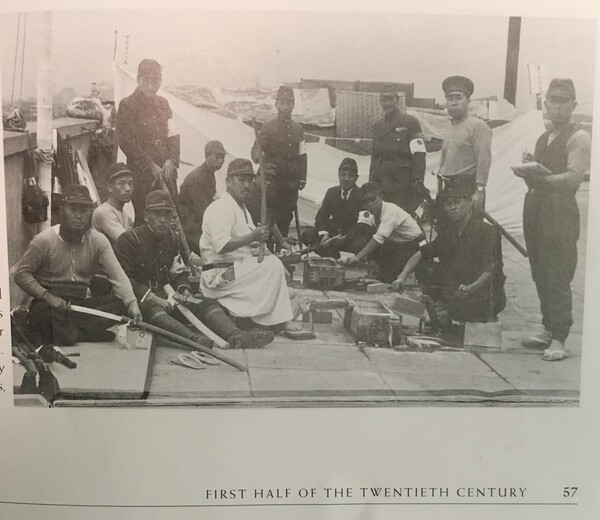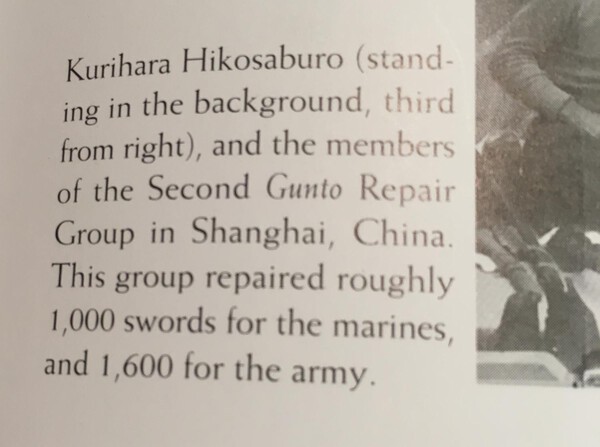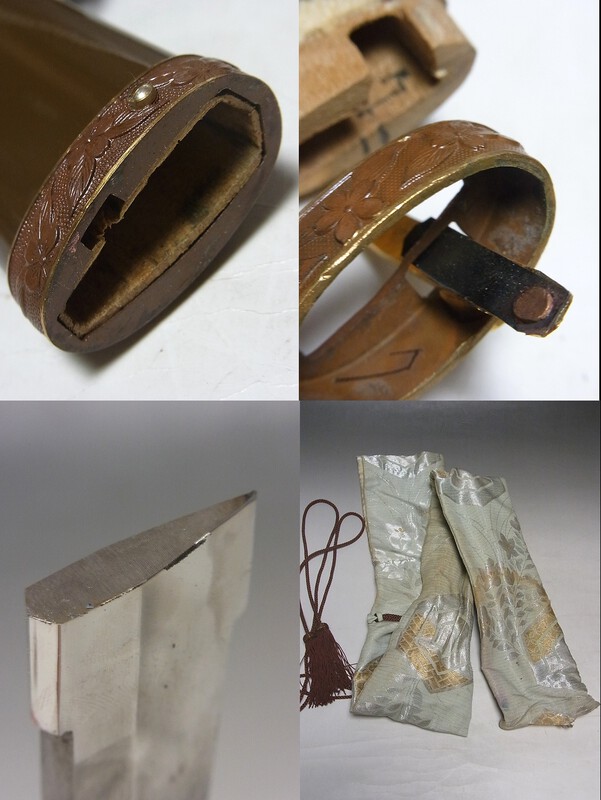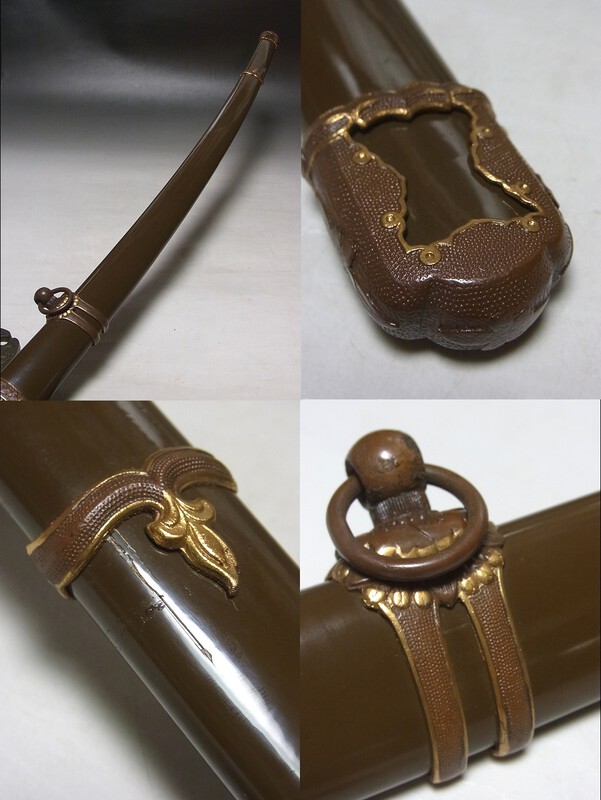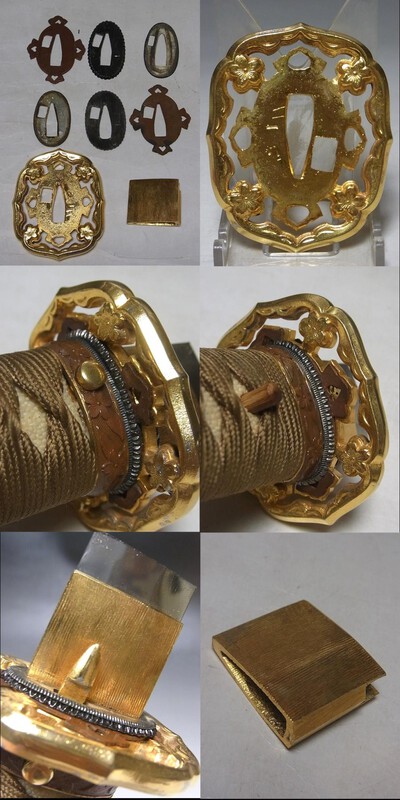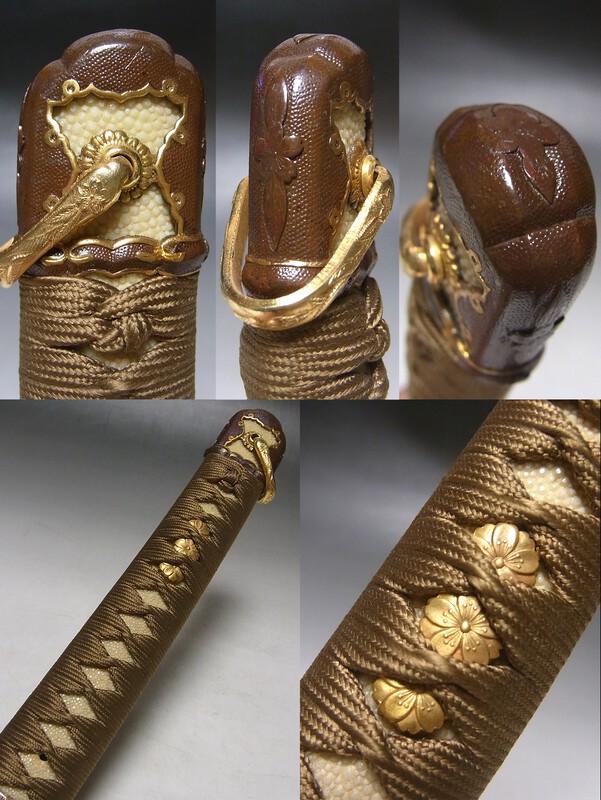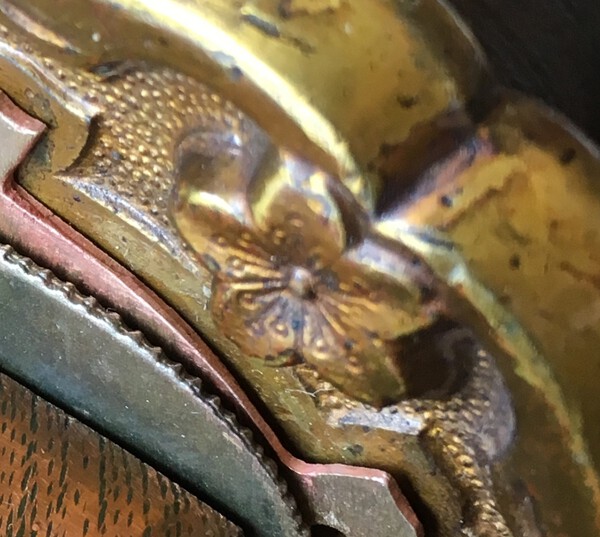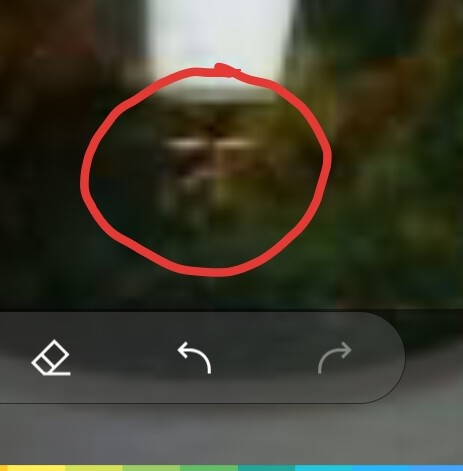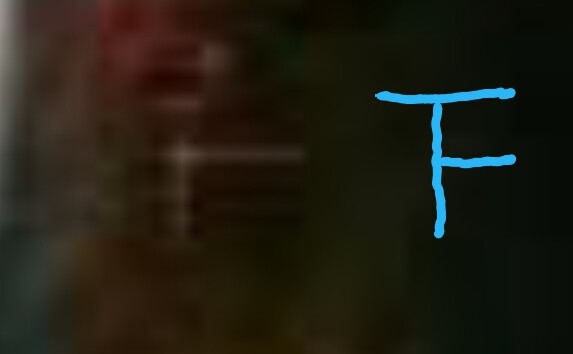-
Posts
13,825 -
Joined
-
Last visited
-
Days Won
169
Content Type
Profiles
Forums
Events
Store
Downloads
Gallery
Everything posted by Bruce Pennington
-
Good catch Logan! A close look at the fuchi also shows they are improving on the blossom and leaf pattern, but still not there yet (fortunately).
-
Ajude (could we get you to go to your settings and put a name; forum rules, but I like talking to a real person), Very nice, yes, Japanese. I'm adding that one to my stamps collection. Do you have a smith name and/or date?
-
-
Yes, an amateur job is an amateur job. One done in the field during the war would be indistinguishable from one done post-war. And inspite of Nick's adamant stand that such non-spec mods wouldn't have been tolerated, we know that non-regulation things were done by troops of all nations, in every war. That's why things like this are just so difficult to know for sure. Steve, I took a re-look at my black saya 95. It's got plenty of scratches in the paint and I just can't tell whether the brown I'm seeing is tarnished steel or original paint. I'm leaning toward tarnished steel. But the quality of the paint job is much poorer than a legit factory job, so I'm leaning to wartime repaint. The one in this post has a similar low-quality look to it as well, with evidence of being painted over an original paint with scratches and dings.
-
These things make me crazy! What bugs me is that the item in question often seems too well crafted to be a fake. Yet, everything you list, and more, cry out "Bubba-job"!!! Look at the file marks that aren't quite covered by the emblem. No self-respecting Japanese koshirae craftsman would leave such ugly detail unfinished.
-
Ok, I found my original source - "Modern Japanese Swords and Swordsmiths, From 1868 to Present", by Leon and Hiroko Kapp, Yoshindo Yoshihara. pgs 56 & 58: They were discussing the attempt to revive interest in swords, in the mid-'30s, by including displays in the annual national art exhibit. "The show was held eight times from then to the end of the war, being cancelled only once (in 1937), because so many smiths and sword craftsmen were sent overseas to battlefields to repair and maintain swords." pg 56 "Kurihara organized a group of sword craftsmen that included smiths, polishers, and koshirae craftsmen, to go to the wartime battlefields to repair swords on the spot. The group was called the Gunto Shuri Genchi Hoshidan (the Voluteer Gunto Repair Group), founded in 1936. Kurihara's original plan called for five to seven smiths in each group. A group was to consist of twenty people and include polishers, tsukamaki (hilt wrapping) craftsmen, and others. Theoretically, each person would work on ten swords a day, but they had to remain at each location far longer than planned and often worked on more than the original quota."
-
Here's a quote from Japaneseswordindex.com, http://japaneseswordindex.com/koa.htm "Japanese-American Courier, Seattle, Washington, June 4, 1938 [Note: This article first appeared in Japan Times.] TOKIO -- Swords are still a prime necessity in war time, despite airplanes, armored tanks, machine guns and repeating rifles. It has been found, and the government has taken special steps, to see that officers have blades which will suit their needs. However, the blades they carry these days are not up to the standards of olden times, according to Hikosaburo Kurihara (see note), expert swordsmith, who recently returned from the Shanghai area, where with a party of smiths he has repaired 15,000 swords for Japanese officers. So great was the need found for this repair work that the master smith has gone to the North China area, where he will attend to the needs of the officers there. Manchurian steel has been found the best material for blades as proved by experience of officers in the Shanghai district, the expert said, and he recommended to the War Ministry that metal of that kind be used in future whenever found available. "We mended about 15,000 swords in Shanghai," the swordsmith said at his home in Hikawacho, Akasaka-ku. "Blades of good steel do not snap easily, as did some of those we found. I recommended to the War Ministry that they make available Manchurian steel to all the swordsmiths in the country. It is about as strong as any we know of." "An officer with a damaged sword, and who expects a battle next day is a pitiful sight. I saw many of them working late at night on their weapons, which may mean life or death to them." (3) [NOTE: Hikosaburo Kurihara was also known as Kurihara Akihide, the founder of the Nihonto Tanren Denshujo (Japanese Sword Forging Institute).]" I know I've read more about the formation of the repair teams somewhere. If I can find it, I'll update.
-

2 Gunto screws(poor shape) Free!
Bruce Pennington replied to Logan09's topic in Military Swords of Japan
It's yours Chuck! -

2 Gunto screws(poor shape) Free!
Bruce Pennington replied to Logan09's topic in Military Swords of Japan
Logan, I'll take both! I need 1, but I'll see which one fits best, then I can mail the remaining one to whomever chimes in second. What do you say? -
With the ashi, it's starting to look like a field repair, maybe. There were gunto repair teams that traveled and made repairs. One team reported repairing 15,000 gunto!
-
Good points Dave! I agree it would not have changed the outcome of the war. And while the sword was not solely responsible for the fighting spirit of the Japanese soldier, it was an inseperable part of the who they were. Many, many an Allied soldier was flabergasted at the tenacity of the Japanese fighting man.
-
Appreciate the book recommendation Peter! I'd say you underestimate the passion of blade collectors when it comes to history and WWII though. I hardly read anything about the European side of WWII because my time is taken with the endless supply of books and stories of the Pacific war. You just won't see a lot of that talk here, though, as these forums are topic specific, and this one is about military swords.
-
It's a biggun'! Maybe Neil, Dave, or one of the other guys more experienced in koshirae can enlighten us?! Were the officer sarrute plain copper?
-
-
Well, it is possible this cut was done right after the war, right. And someone has simply “spiffed it up” for sale?
-
Aye yai yai! Oy Vey! I don't know which is worse - seeing the cut blade or seeing the high-gloss re-paint of the koshirae! I couldn't find a price, did you see one?
-
Ditto! Nice way to support our fellow collectors, Logan.
-
Chuck, I agree with your feelings that Japanese craftsmen were prettey precise about things. While there were a bit of variation from shop to shop, some things were pretty standard on WWII gunto, and the stamen were one of them (as far as I know!) at 3 per petal. I've included a pic of a well-made one. I don't think any of the ones posted on this thread are of enough pixel definition to really see the count on them, though.
-

Translation for katana please☺️
Bruce Pennington replied to Robert E's topic in Translation Assistance
I don't sell much, but 1 I sold on ebay, and another on NMB's for sale forum. -
Jeremy, Mark's offer is a good idea. I will say I've seen a Mantetsu blade with a nakago far more eaten away and misshapen than this, yet it was a legit Mantetsu. So your blade could be legit. If so, like others have pointed out, this could be a "put-together" or as a minimum, the tsuka (handle) was redone in recent times. I would lean to the latter option as all the metal fittings seem to be made by the same manufacturer and not thrown together from various parts. Steve, you're a good translator, what do you think of the mei? Does it appear original and legit Japanese? John, Your example looks legit and very good quality, even if both sets of koshirae were bittsers, the tsuba and seppa seem origninal. The implication is that there WERE gunto during the war using this. Original, pre-WWII samurai rigs didn't use retention clips or leather straps/snaps, they used friction from the habaki. So, it's possible some family blades were refitted for the war in this manner. Of course, another option is that these were made from the manufacturer without latch holes so that the fitters at arsenals could cut their own depending upon the needs of each rig. Unused, uncut tsubas might have been found in shops after the war and sold on the collector market, picked up by a bittser hobbyist and, viola!, we have mystery gunto. All in all, an unknown.
-
Jeremy, I'm with John on this. I hope you got it for a really cheap price, or if you paid market rates ($900-1,200), you can return it. It's a mess. The ito (cloth wrap) looks new and poorly wrapped; the same' (rayskin under wrap) is black, which is a navy color (army is white); all the metal parts look incredibly cheap, though certain details seem correct that fakers usually get wrong (hence John's thoughts on 'late war'); Type 98's have latches unless they are fitted with leather covered combat saya; and finally, though pictures can be decieving, the hamon (temper line) look acid etched. The nakago (tang) is really poor for a Japanese-made blade also. If you are keeping this, you can find batches of seppa for sale on fleaBay. I've bought a couple of groups myself, and fitted some to loose gunto of my own. I'm not trying to be rude or harsh, just letting you know what you've got there so you can decide what to do next.
-
Sorry, but I have to ammend this, and it's too late to just edit the post: Thanks to Guy over on Warrelics, the inspector stamp is simply a poorly struck "To", with the lower "legs" struck heavily, and the top half too lightly.
-
George, I've righted the picture to put it cutting-edge up, and in that position, you can see the stamp is the same as in my other 2 examples - mirror image of the "ue". I think the scratched kanji (oddly written with cutting-edge down) might be exactly what you are describing.
-
I agree with Chris & Ray, and would add that the answer to what to do with it depends upon what the owner plans to do with it. If he's planning to keep it FOREVER and never sell it, then do what he wants to it, but with sound advice. If he thinks he'll sell it, what you do to it can be quite different. "Polishing" a blade can really mess up the look if done wrong. An ametuer with a car buffer or belt buffer puts a glassy finish on the blade that ruins the look. A real polish costs from $700 to $2,400 USD, but is worth every penny if the blade has sentimental value (like mine). In this case, the polish is worth more than the blade, as standard WWII officer gunto, fully decked out, are selling around $1,000 USD. You can find handles (tsuka) and handguards (tsuba & seppa) for sale on the internet, via dealers and ebay for a couple hundred each. You didn't say if it came with a scabbard (saya). But choosing HOW to fit it out depends upon whether this blade was Army or Navy, and having the saya would tell you that. Home-made fittings will detract from the value if he plans to sell. Selling it as-is is better.







